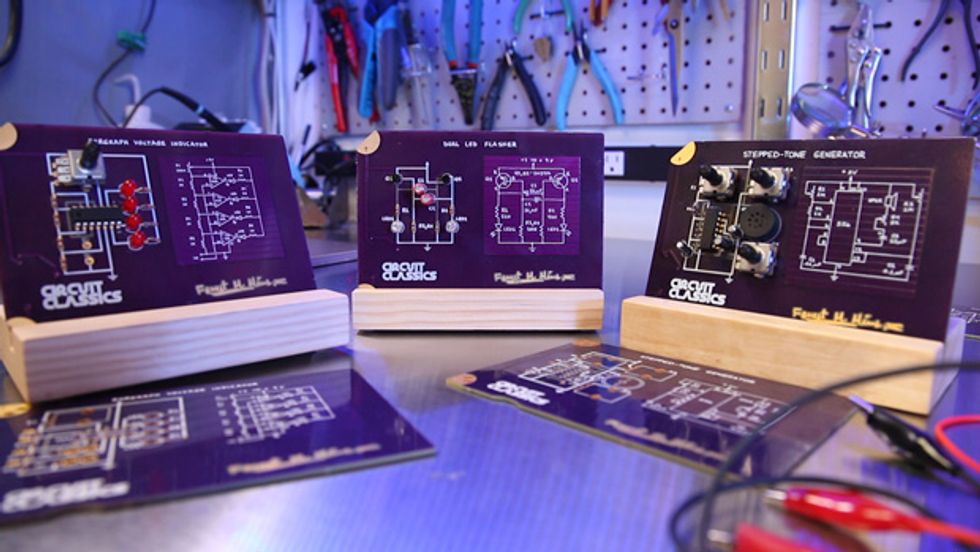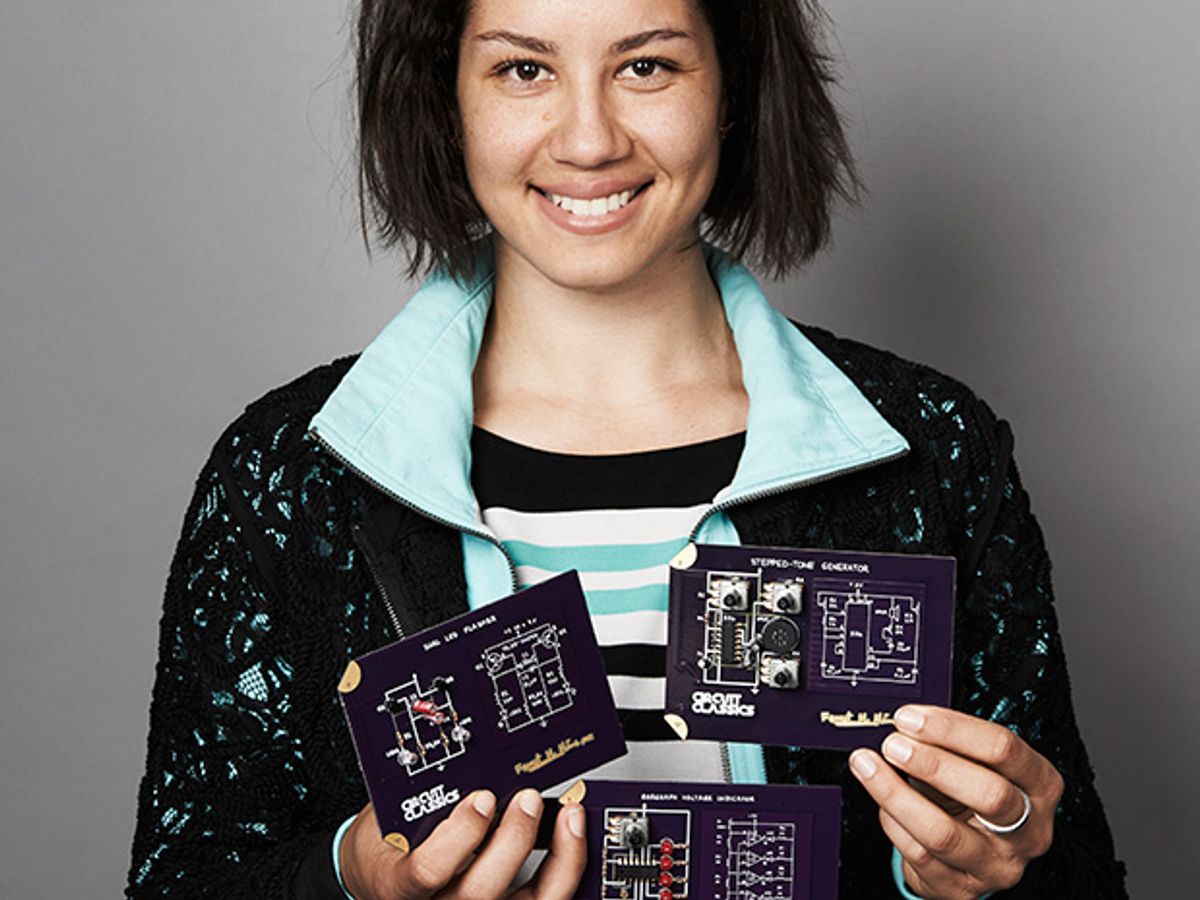There are few authors whose handwriting is as well known as that of Forrest M. Mims. Many American engineers have vivid memories of his Mini-Notebooks and his larger work, Getting Started in Electronics. Initially sold in the 1970s only through RadioShack stores (where several titles can still be bought today), these books featured hand-drawn circuit diagrams of educational or interesting projects alongside hand-lettered explanations.
Mims’s folksy format did much to make electronics feel unintimidating. At the same time, his books gently cemented into readers’ minds what a properly drawn circuit should look like when the time came for them to take up the pencil.
Now MIT alum Star Simpson [above] is giving Mims’s work a fresh lease on life with printed circuit boards based directly on his notebooks. The diagram and explanation of each circuit and sometimes additional supporting text and charts—all still in Mims’s handwriting—are presented beside a printed set of traces and through holes that can be populated with supplied components to bring the classic circuit to life. After gaining the approval of Mims (“He’s been extremely supportive the entire way,” says Simpson), she went to the crowdsource site Crowd Supply to raise money to put the boards into production. She quickly raised US $37,698, far beyond her original goal of $9,750. “I’m delighted and amazed by the response,” Simpson says. “I think it’s a good sign that people are eager to learn about electronics today.”

Simpson’s interest in making the new boards stems from her appreciation of the role that Mims’s books played in her life. “I got into electronics when I was 14, almost by accident, because I found a [Mims] book that was able to teach me, and I want everyone to have that experience,” she says. “I think the tactile and tangible is extremely important. I’m very excited about the possibilities of the Internet, but I don’t think it fully replaces the experiences of seeing something and putting it together manually.”
With a battery holder built in to power components, the circuit boards are intended to be displayed as functional works of art, each coming with a little wooden stand. The initial three circuits Simpson chose are the Dual-LED Flasher, the Stepped Tone Generator, and the Bargraph Voltage Indicator.
Final prices when the kits go on the general market have not yet been announced, but Simpson points toward the crowdfunding reward levels as indicative, where $39 gets you one board and $99 the set of three.
This article appears in the August 2016 print issue as “Classic Circuit Comeback.”
Due to an editing error this article has been corrected on 20 July 2016. Ms. Simpson is an alumni but not a graduate of MIT.
